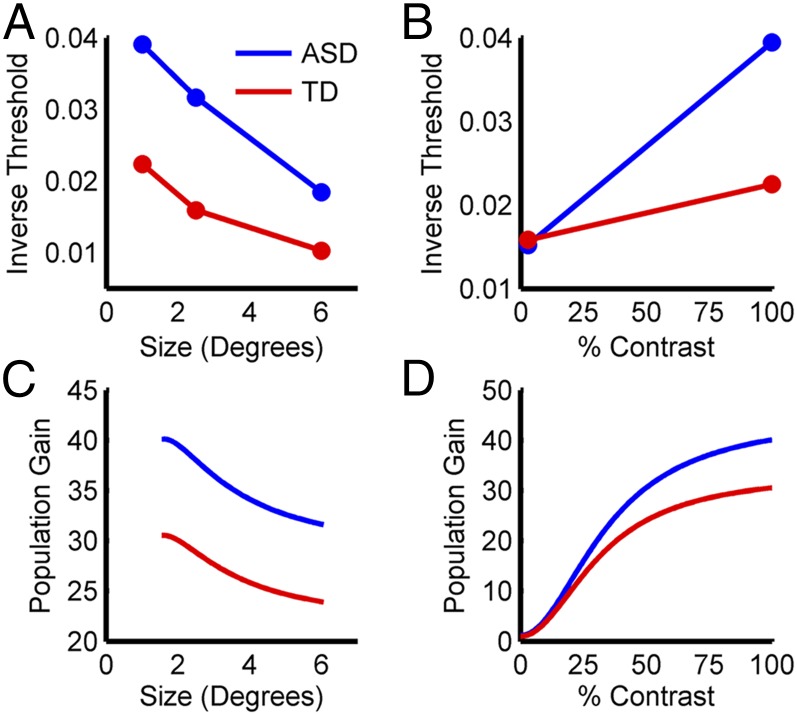Fig. 4.
Simulation 1: visual spatial suppression. (A) Psychophysical data showing that the ability to judge direction of motion decreases as stimulus size increases for high contrast stimuli (40). This is true for both typically developing controls (TD; red) and subjects with autism (ASD; blue), but ASD subjects consistently outperform TD subjects. Larger inverse thresholds indicate better performance. (B) Psychophysical data showing that for a small stimulus, ASD and TD subjects perform equivalently in judging direction of motion for a low-contrast stimulus, but ASD subjects perform better when the stimulus has a high contrast. (C) Simulation results showing population gains for the control (red) and autism (blue) models as a function of stimulus size for high contrast stimuli. The models’ responses follow the same pattern as the psychophysical data in A. (D) Simulation results for the control and autism models as a function of stimulus contrast for small stimuli. The models’ responses follow the same pattern as the psychophysical data in B.

